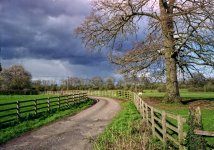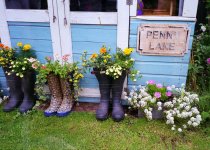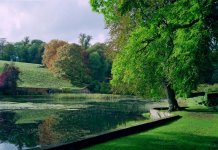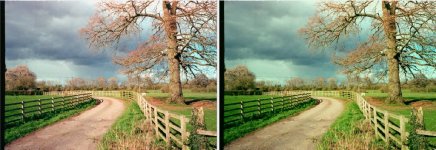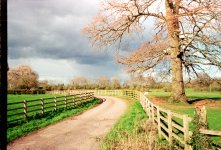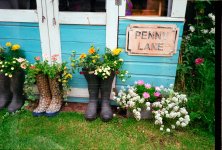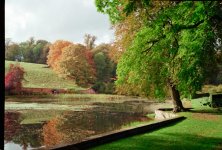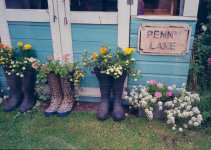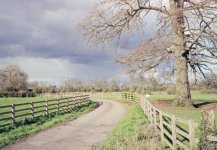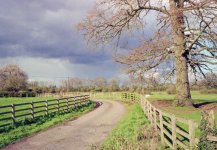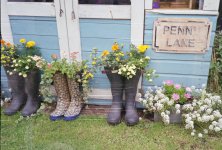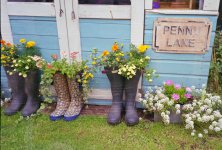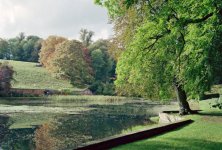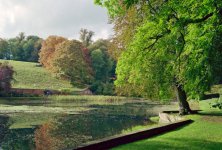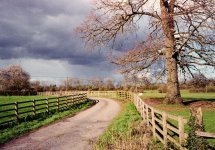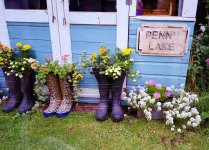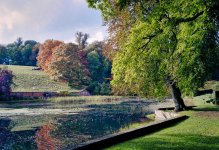ChrisR
I'm a well known grump...
- Messages
- 11,052
- Name
- Chris
- Edit My Images
- Yes
There seem to be quite a lot of different software packages now available to invert scans of negatives, so I thought it would be interesting to try some comparisons. @FishyFish has shown us some comparisons of conversions done with NLP and G2P, but if possible I'd like to go wider!
I have scanned 3 frames of Agfa Vista 200 taken with my Olympus mjuII last year as positives, and saved them as 48-bit TIFFs and 48-bit VUESCAN/Plistek RAWs in my Dropbox. They should be accessible at https://www.dropbox.com/scl/fo/gsd57lavej9mw1ix1i8xx/h?rlkey=6fml498orf0due8hp6c3bc0sg&dl=0 .
If any folk on here who have any of ColorPerfect/ColorNeg, CNMY, darktable negadoctor, Grain2Pixel, Negative Lab Pro/NLP, ScanConvert or any other software or technique would be willing to have a go at converting these, and post the results here I'd be grateful! Using Vuescan to re-process the RAW is also an option, which I might have a go at, although there may be others better at this. If anyone has SilverFast AI Studio it might be interesting to try processing the VUESCAN RAWs. I recently found I could import Vuescan RAW files into Capture One Pro and process them there, but that was using scans of slide film.
NB the two files Vista200T02.tif and Vista200RAW02.tif represent a heavily scratched film frame; I didn't realise this until I scanned it, as Filmdev did such a great job of their touch-up in the dev/scan! I decided tp include it as the light is different and there are more colours. I did let VUESCAN do a light IR filter pass, which doesn't seem to have done much good, but I'm not sure of the effect of that on the RAW file.
I set up Vuescan to scan slides, generic colour slides, default colour space (I do have an IT.8 profile, and when I tried using it there was a huge shift of colours in the Preview, so I decided for the moment to go back to default). I should have asked Nige @FishyFish what settings he uses before starting this!
I've also launched this on Mastodon, where I am @carusb@photog.social, and I'll try doing it on BlueSky and Twitter (now X) as well. I'll try to get permission to share any results on here; I've already got one using darktable from the scratched frame and it looks pretty good for "2 minutes playing around"!
I have scanned 3 frames of Agfa Vista 200 taken with my Olympus mjuII last year as positives, and saved them as 48-bit TIFFs and 48-bit VUESCAN/Plistek RAWs in my Dropbox. They should be accessible at https://www.dropbox.com/scl/fo/gsd57lavej9mw1ix1i8xx/h?rlkey=6fml498orf0due8hp6c3bc0sg&dl=0 .
If any folk on here who have any of ColorPerfect/ColorNeg, CNMY, darktable negadoctor, Grain2Pixel, Negative Lab Pro/NLP, ScanConvert or any other software or technique would be willing to have a go at converting these, and post the results here I'd be grateful! Using Vuescan to re-process the RAW is also an option, which I might have a go at, although there may be others better at this. If anyone has SilverFast AI Studio it might be interesting to try processing the VUESCAN RAWs. I recently found I could import Vuescan RAW files into Capture One Pro and process them there, but that was using scans of slide film.
NB the two files Vista200T02.tif and Vista200RAW02.tif represent a heavily scratched film frame; I didn't realise this until I scanned it, as Filmdev did such a great job of their touch-up in the dev/scan! I decided tp include it as the light is different and there are more colours. I did let VUESCAN do a light IR filter pass, which doesn't seem to have done much good, but I'm not sure of the effect of that on the RAW file.
I set up Vuescan to scan slides, generic colour slides, default colour space (I do have an IT.8 profile, and when I tried using it there was a huge shift of colours in the Preview, so I decided for the moment to go back to default). I should have asked Nige @FishyFish what settings he uses before starting this!
I've also launched this on Mastodon, where I am @carusb@photog.social, and I'll try doing it on BlueSky and Twitter (now X) as well. I'll try to get permission to share any results on here; I've already got one using darktable from the scratched frame and it looks pretty good for "2 minutes playing around"!








